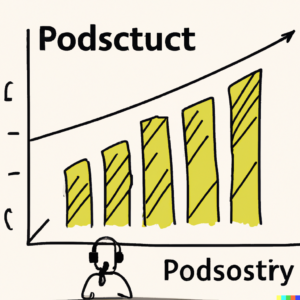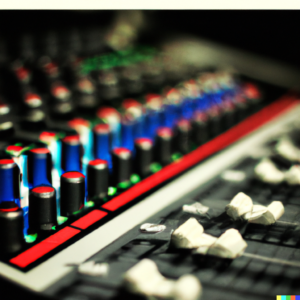Buy Well, Buy Once: A Little Extra Knowledge, A Little Less Nonsense
If you’re thinking about starting a podcast, you might be tempted to go for the cheapest microphone you can find. After all, how much difference can a microphone make, right? Well, the answer is a lot. A microphone is only one-third of the equation when it comes to good sound, but it’s a crucial third. In this blog post, we’ll explain why you should skip the cheap microphone and invest in a high-quality one like the Shure SM7B, Shure MV7, or ElectroVoice RE20.
First of all, let’s talk about why a microphone is so important. When you’re recording a podcast, your voice is the most important element. If your voice sounds bad, your podcast will sound bad, no matter how good the content is. A cheap microphone might be able to capture your voice, but it won’t do it justice. The sound quality will be poor, and your listeners will quickly tune out.
So, what makes a high-quality microphone like the Shure SM7B, Shure MV7, or ElectroVoice RE20 so much better? Well, for starters, they’re built to last. These microphones are designed for professional use, which means they’re built to withstand the wear and tear of frequent use. They also have superior sound quality, thanks to features like dynamic capsules and advanced noise-canceling technology. This means that your voice will sound clear and crisp, even in noisy environments.
But here’s the thing: even the best microphone won’t make up for a bad recording environment or poor microphone technique. That’s why it’s important to understand that a microphone is only one-third of the equation when it comes to good sound. The other two-thirds are allocated to the recording room and microphone technique.
Let’s start with the recording room. If you’re recording in a noisy environment, no microphone can completely eliminate that noise. That’s why it’s important to record in a quiet, acoustically-treated room. This means using sound-absorbing materials like foam or blankets on the walls and floor to prevent sound from bouncing around the room. It also means avoiding noisy appliances like fans or air conditioners.
Next up is microphone technique. Even the best microphone won’t make up for poor microphone technique. This means understanding how to position the microphone correctly, how to speak into it, and how to adjust the settings to get the best sound. It also means being aware of things like mouth clicks and plosives (the popping sound you get when you say “p” or “b”) and taking steps to minimize them.
In conclusion, a microphone is only one-third of the equation when it comes to good sound. But that one-third is crucial. Investing in a high-quality microphone like the Shure SM7B, Shure MV7, or ElectroVoice RE20 will make a big difference in the sound quality of your podcast. Just remember that a good recording environment and proper microphone technique are also important. With those three elements in place, you’ll be well on your way to creating a podcast that sounds great and keeps your listeners coming back for more.







